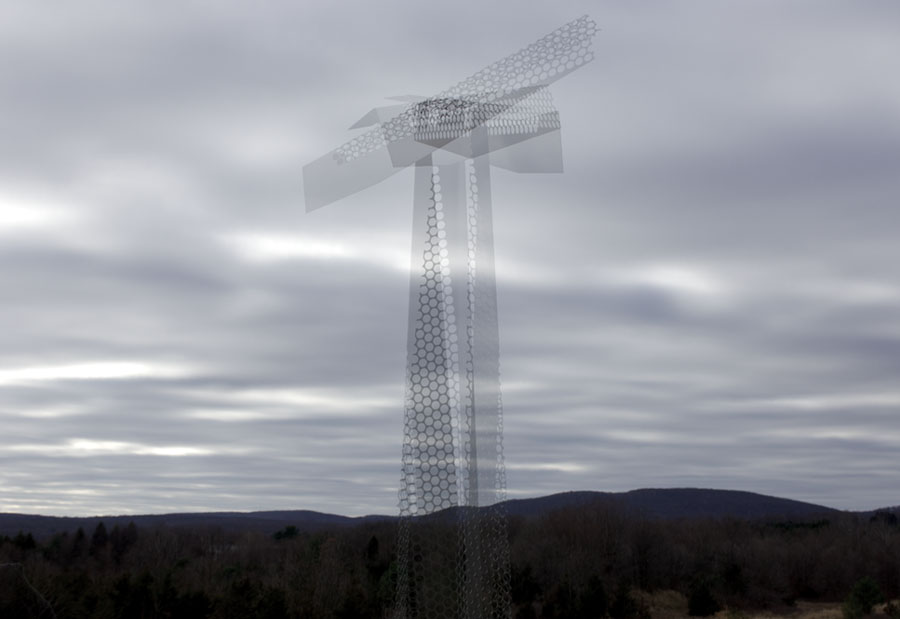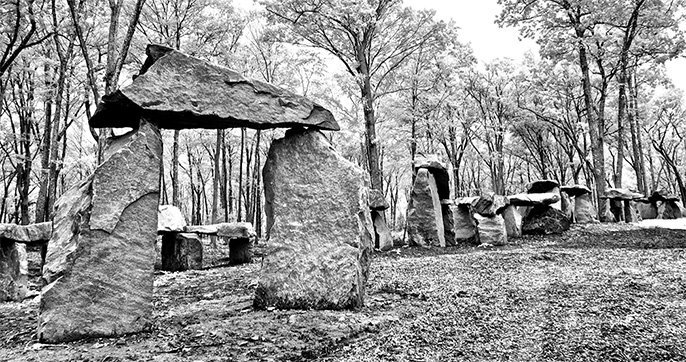Multiple exposure experiments
Here are some multiple-exposure images to show sculptures that can’t be constructed, and to get some sense of the visual dynamics of objects moving in 3-space.
I tried to figure out how to configure the camera, the movement of the object, and the background.
First, some indoor experiments of moving the camera (rather than the object) over an old painting of mine (London Dance Geometry, 1970).
Multiple exposures produce multiplicity of elements at different value levels, a much richer and more subtle texture than the original painting.
This image, however, is smooth; it is a flat. The real painting, however, has a surface, a texture, and a depth from the stretched canvas–
for the real painting exists in 3-space.

OK, now let’s go outdoors to photograph changing states of a 3D object (a new stainless piece).
The camera is on a fixed tripod mount. I missed a retrospectively obvious point, however,
for the unchanging background strongly comes forward because it is repeatedly photographed in the multiple exposure,
whereas the piece is photographed only once in each of its changing positions!
Thus the knots in the background wood turn into eyes peering onto the changing scene. Oops.

Let’s try a better background and put the piece up against the sky.
Now, fortuitously, the sky comes forward into the multiple images of the piece,
creating this eerie and wonderful scene of a sculpture that can’t be built.





While it may remove the fun of “blind” experimentation from the process, you can make
multiple exposures in Photoshop instead of in-camera. For example, if you had taken any of
the above images separately and simply copied and pasted one on top of the other in
photoshop, and then changed the “mode” of “stacked” images in your layers palette to
“screen” you would see the same effect. This of course, greatly expands the number of
combinations available to you to as you can mix in match different images, changes the
opacity of each, etc. Not to mention you have the benefit of having preserved the single,
unmanipulated images for your archives.
This helpful plan is similar to taking the same photograph at various f-stops to increase the
dynamic range of the image so that the composite stacked final image isn’t blown out in the
shadows and highlights. (Stacking of course requires that the camera remains in an exactly
fixed position during the multiple photographs. Maybe the mirror rattle should also be
suppressed at the same time.)
I hope to try all this out. I do also like the surprises that
result from the accidents of live rotation.
Jay Mark Johnson’s stationary slit camera photographs repeatedly a
single line of sight, to streak stationary backgrounds and foreshorten
fast-moving objects. The result is a clear picture of objects in motion,
scaled by their speed, easily differentiated against a regular field.
Article,
discussion, and the
photographer’s
web site.